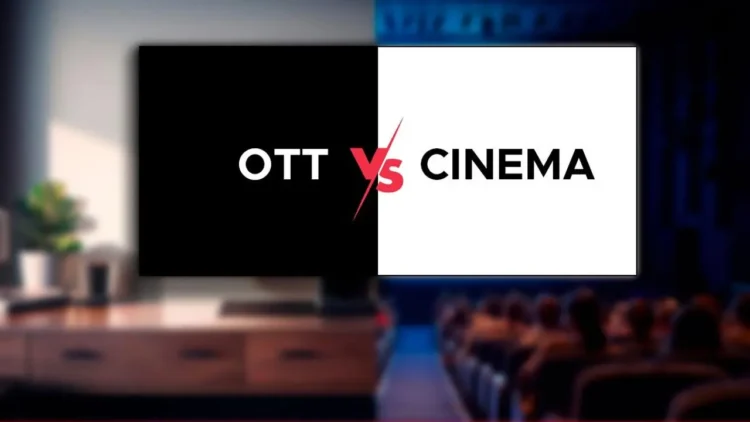The rise of Over-The-Top (OTT) platforms has irrevocably altered the landscape of entertainment, and the Telugu film industry (Tollywood) is no exception. For decades, a theatrical release was the ultimate goal, the gold standard of success. Now, a new dynamic is emerging, with OTT platforms offering both opportunities and challenges to the traditional filmmaking model.
The Allure of the Silver Screen (and its Waning Charm)
The magic of the cinema hall remains undeniable. The shared experience of watching a larger-than-life story unfold on the big screen, amplified by booming sound and visual spectacle, is deeply ingrained in the culture of Telugu cinema. Films offer a higher budget for production, often resulting in grand visuals, extravagant sets, and A-list star power. The theatrical release also acts as a launchpad for careers, cementing the star status and market value of actors, directors, and technicians.
However, the theatrical experience also comes with limitations. Ticket prices, travel time, and the pressure of finding a “perfect” viewing experience (uninterrupted, comfortable) are significant barriers. The dwindling attention span of audiences, exacerbated by readily available content, also poses a challenge. A film’s success hinges heavily on its opening weekend performance, creating immense pressure for filmmakers. Plus, the gatekeeping nature of the distribution and exhibition network could sometimes leave smaller, independent films struggling for screen space.
OTT: The Democratizing Force (and its Pitfalls)
OTT platforms have opened doors for a wider range of stories and voices within the Telugu film industry. The absence of censorship (within limitations) allows for more nuanced and bold narratives to explore themes previously considered taboo for the silver screen. Lower production costs, coupled with a global reach, make OTT an attractive option for independent filmmakers and those experimenting with different genres.
Furthermore, OTT platforms provide opportunities for actors and technicians who might not fit the mainstream mold to showcase their talent. Web series and direct-to-OTT films offer a different kind of storytelling, focusing on character development and serialized narratives that can delve deeper into complex themes.
However, the OTT boom is not without its drawbacks. The sheer volume of content available can make it difficult to stand out. The monetization model for OTT, often based on subscriptions, can be less immediately rewarding than a blockbuster theatrical release. Also, the lack of a unified rating system and inconsistent content quality can be frustrating for viewers. The “cheap and easy” perception associated with some OTT content can devalue the art of filmmaking, leading to lower production values in certain cases.
The Telugu Film Industry’s Response
Tollywood has been largely receptive to the OTT revolution. We’ve seen established production houses collaborating with streaming platforms to create original content, ranging from web series like Baahubali: Before the Beginning (though production stalled) and Kotha Poradu to direct-to-OTT films like Vakeel Saab and Narappa that offered a respite during the pandemic.
We are also witnessing a blurring of lines, with established stars appearing in OTT projects and OTT-discovered talents gaining recognition and making their way to the big screen. This cross-pollination is enriching the talent pool and bringing fresh perspectives to Telugu storytelling.
However, the industry is still navigating the optimal balance. Many big-budget films are strategically planned for theatrical releases, relying on the spectacle and star power to draw audiences back to the cinemas. Meanwhile, smaller films and web series are finding success on OTT platforms, carving out a niche for themselves and reaching a different audience.
Looking Ahead
The future of Telugu cinema is likely to be a hybrid model, where films and OTT platforms coexist and complement each other. The key will be for filmmakers and platform providers to understand the unique strengths of each medium and tailor their content accordingly.
- Films: Will continue to be the domain of grand spectacles, star-driven narratives, and community viewing experiences. Focus will be on delivering an unforgettable cinematic experience that justifies the cost and effort of going to the theater.
- OTT: Will be the playground for experimentation, niche storytelling, and character-driven narratives. Greater emphasis will be placed on content quality, engaging storytelling, and providing a seamless and personalized viewing experience.
The Telugu film industry needs to embrace innovation, explore new storytelling techniques, and adapt to the changing consumption habits of its audience. By understanding the unique strengths of both films and OTT platforms, Tollywood can continue to thrive and entertain audiences both at home and around the world. The challenge lies in maintaining the quality and integrity of storytelling, regardless of the medium, and ensuring that both filmmakers and audiences benefit from the dynamic and evolving landscape of entertainment.




















